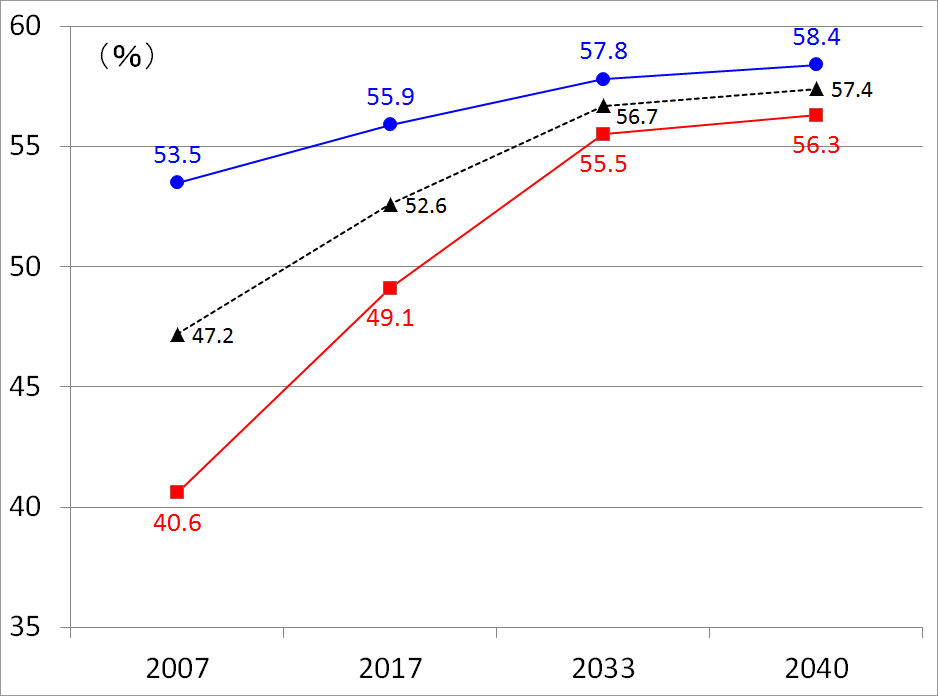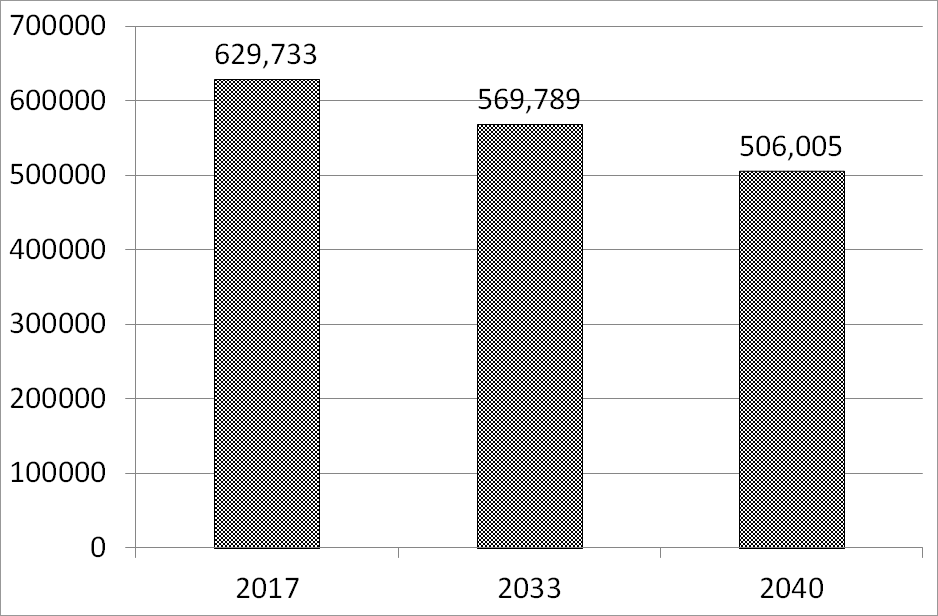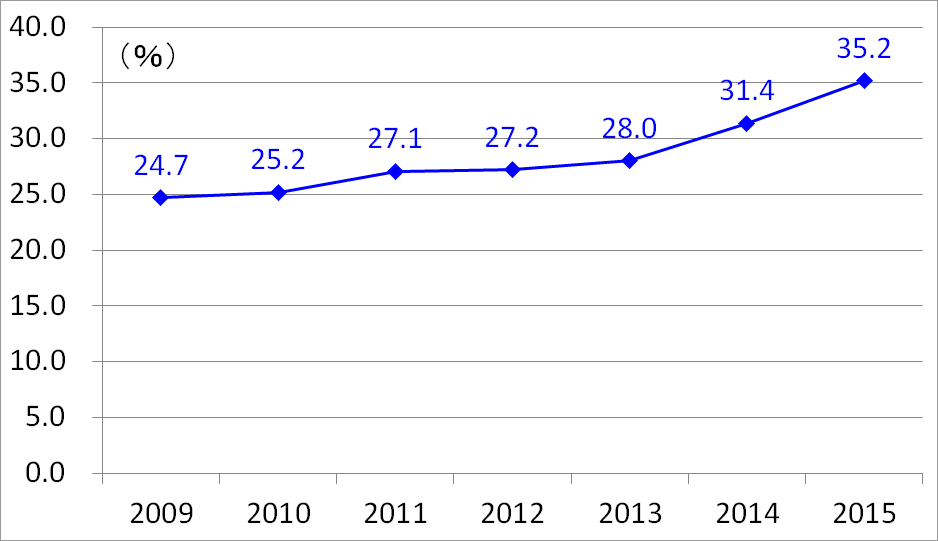Column Finance and the Social Security System 2018.05.17
【Aging, safety net and fiscal crisis in Japan】No.106: University Unification Begins
In February 2018, the Ministry of Education, Culture, Sports, Science, and Technology (MEXT) released a projection of university admission percentages and university entrants. Universities in this data include not only four-year universities, but also two-year universities, cyber universities, etc.
As shown in Figure 1, the male university admission percentage is expected to increase from 55.9% in 2017 to 58.4% in 2040. The percentage of female applicants is expected to increase from 49.1% in 2017 to 56.3% in 2040. However, the Ministry estimates that the number of university entrants will decline by 19.6% from 629,733 in 2017 to 506,005 in 2040 (Figure 2). This is because the 18-year-old population will decrease sharply (see column No. 11).
Therefore, the Ministry is planning to implement legislation in 2018 that will enable the integration of universities. In addition, to stabilize university management, the Ministry aims to increase the number of foreign students from 267,042 in 2017 (see column No. 87) to 300,000 in 2020. The proportion of foreign students finding employment in Japan after graduation has increased from 24.7% in 2009 to 35.2% in 2015 (Figure 3). Therefore, the increase in foreign students is also important as a countermeasure for the labor shortage in Japan.
Figure 1: Projection of the percentage of high school graduates who go to university

Source: Ministry of Education, Culture, Sports, Science, and Technology (MEXT)
Figure 2: Projection of the number of university entrants

Figure 3: Percentage of foreign students finding employment in Japan

